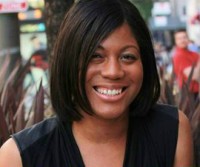Talking about racism on a college bus trip
The tension was palpable. Then a white student stood up and said something I've never forgotten.

In the spring of my freshman year of college, my roommate invited me on a trip called Sankofa, a three-day journey down south exploring black history in partnership with another student. There were about 20 pairs, mostly comprised of one black and one white student. We traveled all night from Chicago to Louisiana, arriving at our first stop: a plantation.
We had come prepared to witness the harsh realities of slavery, but the real revelation was how ignorant and self-congratulatory our guides from the plantation could be. For the entire tour, we were told about “happy slaves” who sang in the fields, who worked under better conditions than most other slaves, and whose fingers never bled despite the massive amounts of cotton they picked. The guides’ presentations were filled with misconceptions and inaccuracies, and at the conclusion of the tour, they even gave us the chance to pick some cotton ourselves.
Read our latest issue or browse back issues.
Black students. Picking cotton.
The anger of the black students and the confusion of the white students was palpable. As we climbed aboard the bus to roll to our next destination, our conversation quickly moved beyond superficial niceties. We took turns speaking into a microphone at the front of the bus. The black students were livid at the romanticism displayed at the plantation. The white students listened politely but seemed unmoved as they weighed our information against the “experts” at the plantation. They responded with questions like “What about the Holocaust or the potato famine? Don’t most people groups have some trauma in their history?” We did our best to correct the misconceptions, but the tour had driven a wedge in the group. And our next stop would drive that wedge even deeper.
Our bus pulled into a museum consisting of only one exhibit—a history of lynching. Every wall was filled with photographs of dark-skinned human beings swinging by their necks. A mother and son hanging over a bridge. Burned bodies swinging over dying fires. White children staring in wide-eyed wonder while their parents proudly point to the mutilated body behind them. The cruel smiles of white faces testifying to the joy of the occasion. We came across newspaper stories that advertised lynchings as community events. In another case we saw a postcard. On the front was a photo of a mutilated man still hanging from a rope. On the other side, a handwritten note: “Sorry we missed you at the barbecue.”
There was no sound as we walked through the exhibit. We could barely breathe, let alone speak.
When we climbed back on the bus, all that could be heard were sniffles. The emotion was thick. It was as if no time had passed between the generation in the pictures and the one sitting on that bus. It was all so real.
The first students to break the silence were white. “I didn’t know this even happened.” “It’s not my fault; I wasn’t there.” They reached for anything that would distance themselves from the pain and anger of the moment; anything to ward off the guilt and shame, the shock and devastation.
The black students had passed beyond any need to appear polite. We shared personal stories of pain—lynchings that happened to our own families—trying to make real those bodies from the photographs. But we weren’t just interested in focusing on black bodies; we were going to focus on white ones, too.
A tall black woman, a senior that year, peered at us all as she spoke evenly, almost disarmingly in the heat of the moment. “I just want to say that I’m having a hard time even being mad at you white people anymore. I think I’ve just been convinced that white people are innately evil. You can’t help it. You steal and kill, you enslave and lynch. You are just evil.” Then she handed the microphone back to the next person and calmly took her seat. The white students hadn’t appreciated her words, but the black students on the bus could have kissed her feet. She had done what social convention and respectability politics said not to do—she had spoken her truth even if it meant hurting the feelings of every white person on that bus.
The tension climbed. Black and white grew further and further apart with each new speaker. The white students defended their family histories as the black students searched for the words to express how it felt to stare at ours in those photos from the museum. Then, as we pulled into a parking lot to break for lunch, another white student stood to speak. But instead of a different variation on “Please don’t make me responsible for this,” she took a deep breath and gave in to the emotion of it all.
“I don’t know what to do with what I’ve learned,” she said. “I can’t fix your pain, and I can’t take it away, but I can see it. And I can work for the rest of my life to make sure your children don’t have to experience the pain of racism.”
And then she said nine words that I’ve never forgotten: “Doing nothing is no longer an option for me.”
Those words changed the air on that bus. She acknowledged the depth of our pain without making excuses for it. And in that moment, I knew her words were true for me as well. Something shifted inside me on this trip. Something powerful and unmistakable. Doing nothing was no longer an option for me.
Sankofa was the first time I felt the distance between history and myself collapsing. The black-and-white photos I had grown used to were now filled with color, associated with real places, places I had now walked. The inspiration to be part of their legacy was palpable, and the ways Christianity had been used to uphold all the evil of this history was not lost on me. Somehow, I just knew it was time to devote myself to the struggle.
This article is adapted from I’m Still Here: Black Dignity in a World Made for Whiteness © 2018 by Austin Channing Brown. Published by Convergent, an imprint of the Crown Publishing Group, a division of Penguin Random House LLC. A version of this article appears in the print edition under the title “Black bodies, white bodies.”






